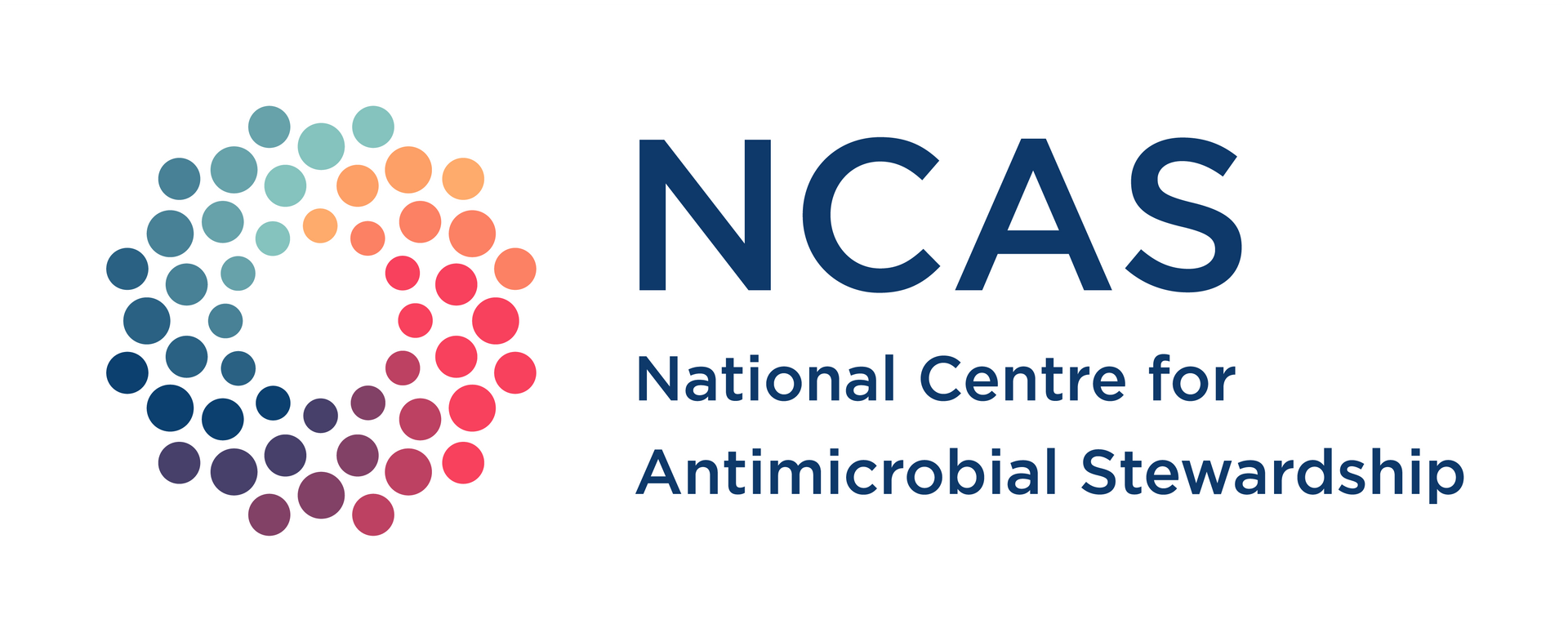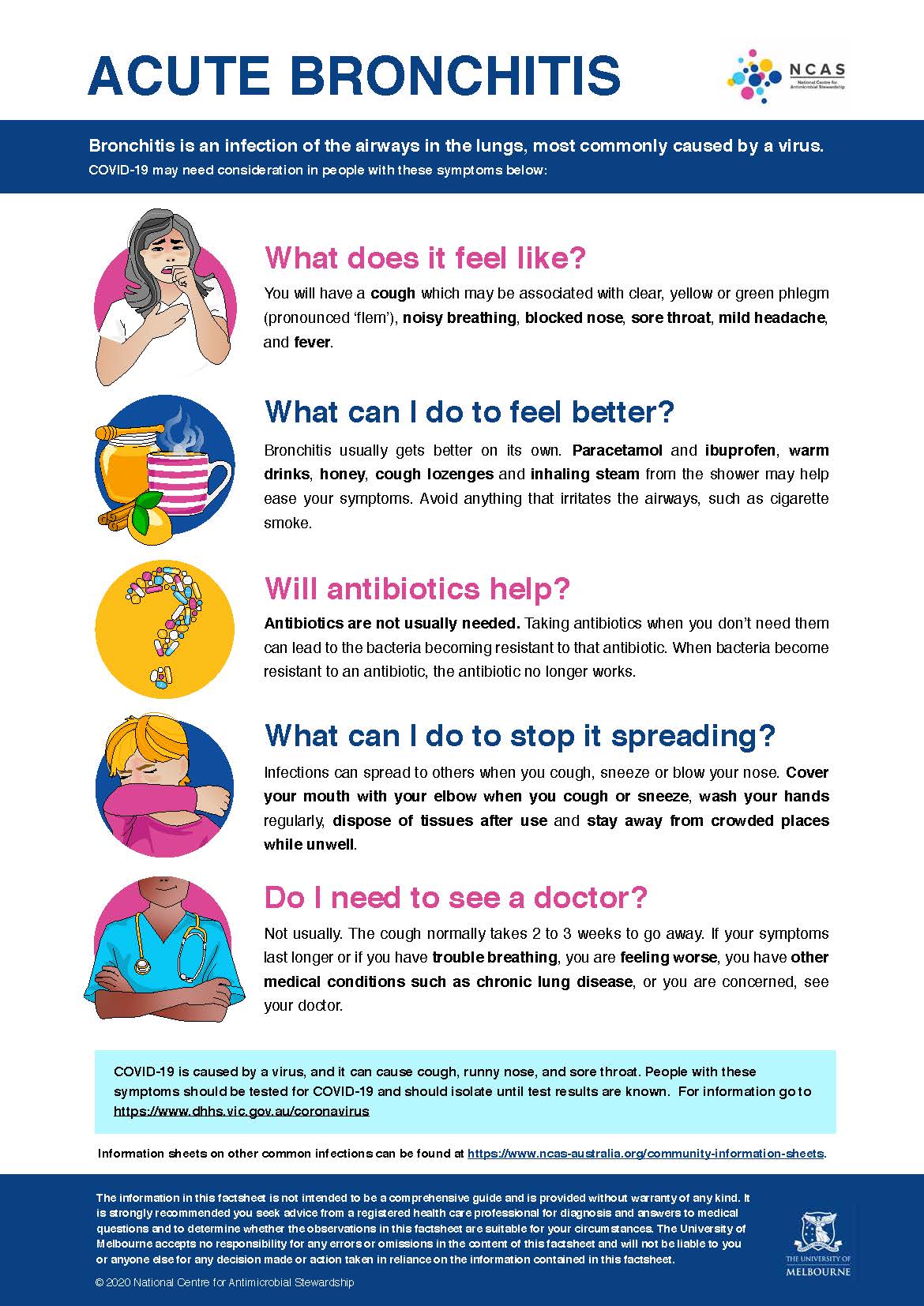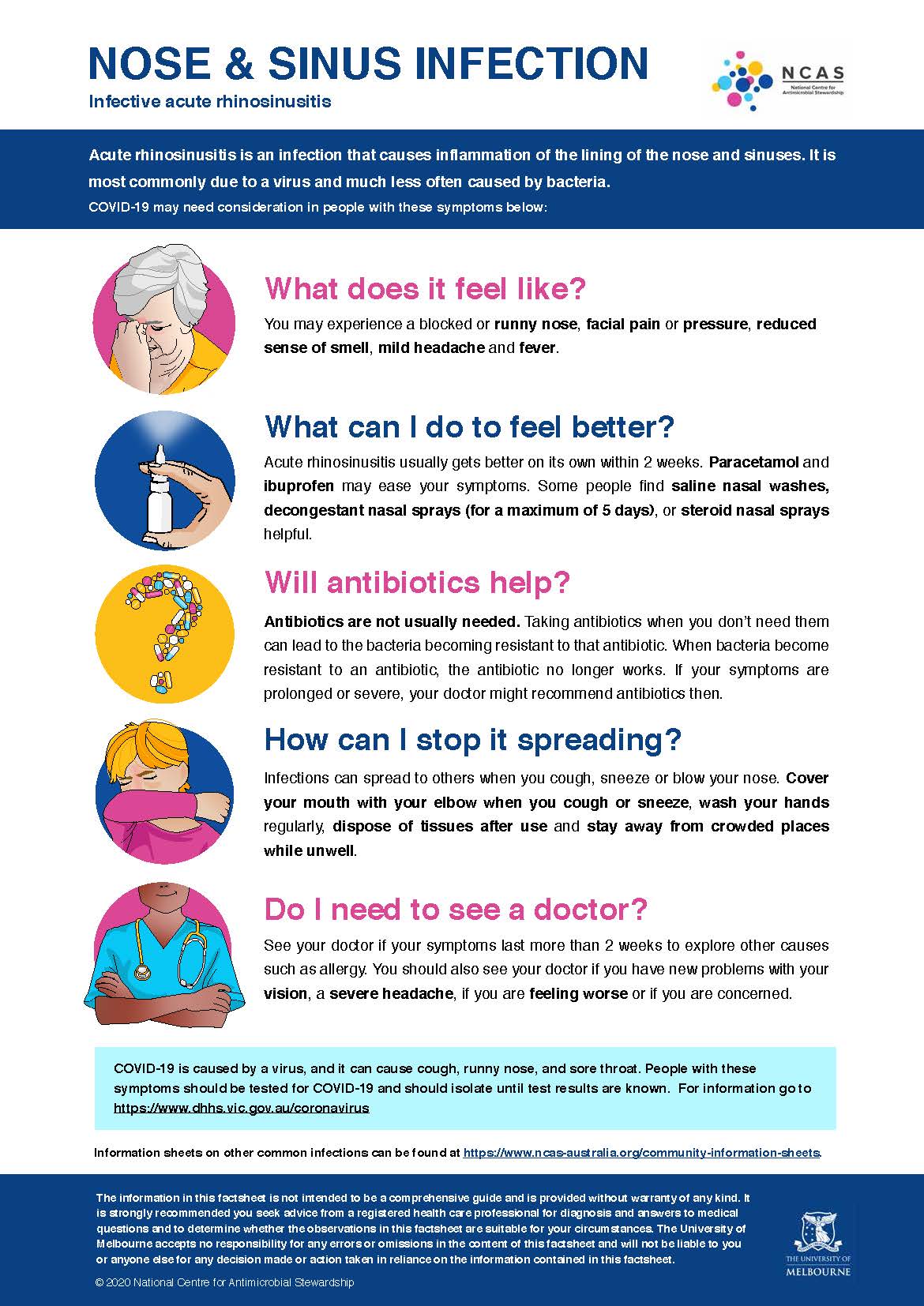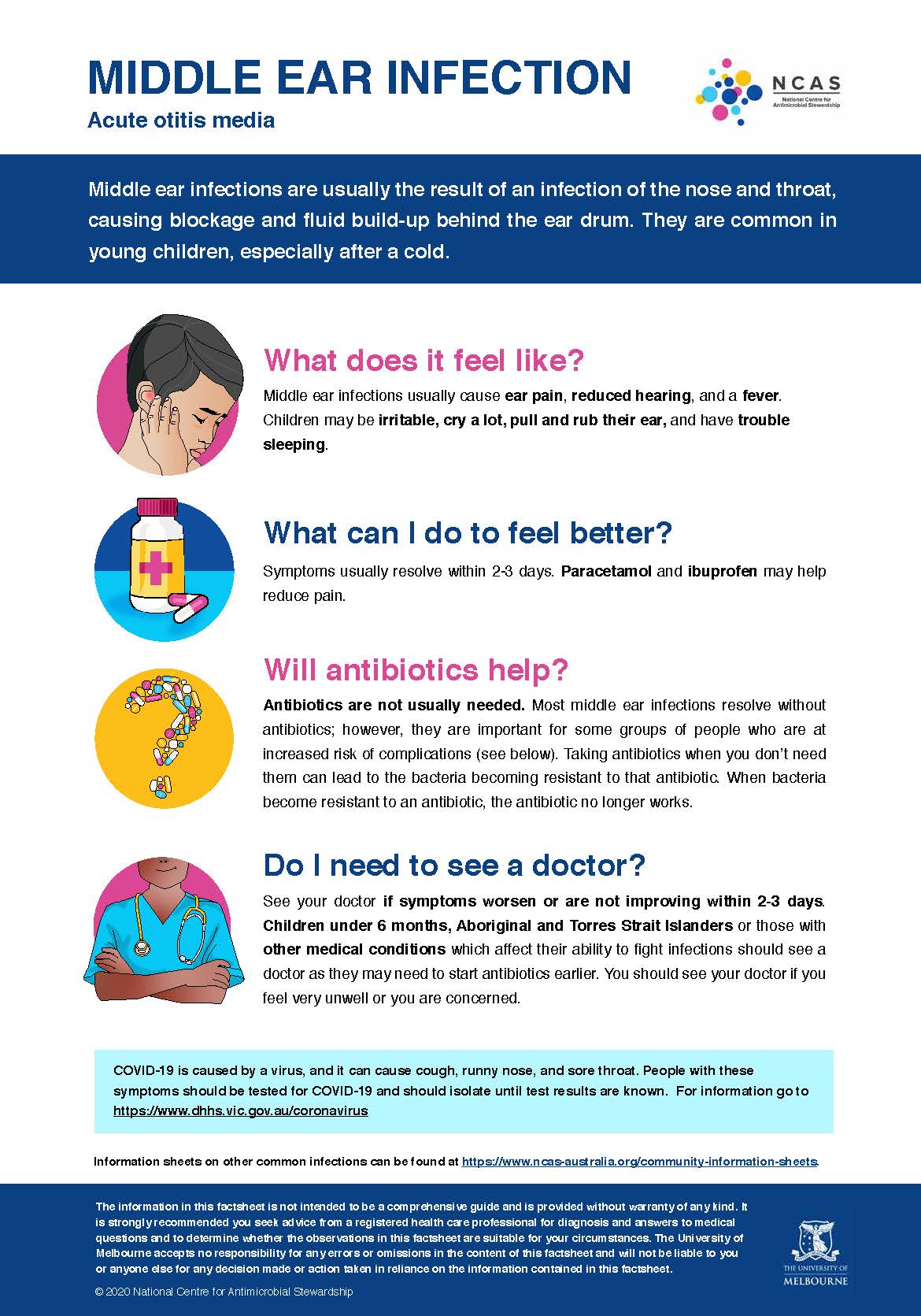What is antimicrobial stewardship?
Different types of microbes
What are bacteria?
Bacteria are microscopic living things the size of one cell. They are everywhere in our environment and in our bodies. Most bacteria are harmless to us, and some can be very useful for us. For example, bacteria in our gut help us to digest food. Bacteria that exist in our bodies in a helpful or harmless relationship are called ‘commensals’.
There are some bacteria, however, that can cause illness or infection. These are called ‘pathogens’. They affect our bodies in a way that makes us feel sick. In some cases, bacterial infections can be extremely serious.
There are some pathogenic bacteria that may be harmless if they exist on the surface of the skin or inside the gut, but if they enter the bloodstream, they can make us very unwell. These ‘colonisers’ (which live on our skin or in our gut) have the ability to become ‘pathogens’ in certain circumstances.
What is a bacterial infection?
A bacterial infection is an illness caused by the effects of bacteria in a person’s body. The type of illness depends on the type of bacteria and the location in the body that is affected. Examples include:
- pneumonia (infection in the lungs),
- urine infections (infection in the bladder or kidneys),
- skin infections (skin abscesses, skin ulcers, cellulitis or infected wounds),
- gastroenteritis (infection in the bowels),
- osteomyelitis and septic arthritis (infection in bones and joints),
- sexually transmitted infections (such as gonorrhoea),
- meningitis (infection in the lining of the brain),
- septicaemia, also called bacteraemia (infection in the bloodstream; examples might include typhoid fever or meningococcal infection, or sepsis after childbirth),
- intra-abdominal infections (often related to bowel problems such as appendicitis), and
- complications after surgery (wound infections or abscesses).
Bacterial infections can vary from mild to severe, and severe infections may cause death.
What is a virus?
Bacteria and viruses are very different. Viruses are much smaller than the size of one cell. They have quite different internal structures.
Common viral infections include:
- the common cold,
- influenza,
- hepatitis infection,
- human immunodeficiency virus (HIV) infection
- herpes ‘cold sores’ or genital herpes, and
- glandular fever.
Substances that act on bacteria to kill them or stop them from functioning properly typically have no effect on viruses.
What other microbial pathogens are there?
Other microscopic living things that can cause illness in people include:
- parasites – malaria and giardiasis (a gut infection) are examples of infections that are caused by parasites, and
- fungi – tinea (a skin infection) is an example of an infection that is caused by fungi.
Other serious fungal infections are rare and most often occur in people with impaired immune systems.
What is an antibiotic?
An antibiotic is any substance that kills bacteria, or acts to limit their function (so they can’t grow or reproduce). Antibiotics can be naturally occurring or artificial (man-made).
In nature, living things (such as bacteria or fungi) can produce substances (‘antibiotics’) to kill other bacteria and to help them ‘compete’ for space, nutrients, etc.
We can utilise these substances or produce artificial substances that have the same effects.
We use these antibiotics as treatments for bacterial infections (illnesses caused by bacteria) or to prevent bacterial infections.
Importantly, most antibiotics only work against certain bacteria. They do not usually work against all bacteria and do not work against viruses.
What is antimicrobial resistance?
Since their discovery over 70 years ago, antibiotics have greatly reduced illness and death from infectious diseases. Antibiotics are drugs that work by killing or stopping the growth of bacteria, and, as these drugs have become widely used, the bacteria that they are designed to kill have changed so that the drugs are no longer effective against them. That is, that the bacteria have become resistant to the antibiotic. It is a change in the bacteria, not a change in the patient or the drug that causes antibiotic resistance.
As mentioned earlier, most bacteria are harmless, and many are beneficial to human health. Some, however, can cause disease. We prescribe antibiotics to try to kill these harmful bacteria. Bacteria have been on the planet for billions of years, and they are good at adapting to survive. Antibiotic drugs are just another challenge that they need to overcome by adapting in order to survive. Antibiotic resistance happens when bacteria develop the ability to withstand the effects of antibiotics. Bacteria adapt, often by changing part of their genetic make-up, so that they can ‘resist’ the effect of the antibiotic drug. The substances that usually kill them or stop them from growing and reproducing no longer work. It is the result of a change in the bacteria.
In nature, if bacteria are exposed to substances that try to kill them or limit their growth, they can try to survive by changing their structure. Mutations are constantly occurring in the genetic code of bacteria when they reproduce. Some of these mutations will change the bacteria so that they will have characteristics that make them more likely to be able to survive exposure to a substance that would usually kill them. For example, bacteria might develop a thicker cell wall so that an antibiotic can no longer penetrate that wall. Bacteria might change the shape of one of their internal proteins so that the antibiotic cannot bind to and act on it. Bacteria might start producing a protein that actually breaks apart the antibiotic, or develop other ways to remove the antibiotic. These all make bacteria able to withstand the antibiotic. It is no longer effective in killing it or stopping it from growing or reproducing.
This means that infections caused by these resistant bacteria will not be treated by the antibiotics that we would usually expect to work. Once this occurs, the resistant strains of bacteria will be more likely to survive than the strains that are susceptible to the antibiotics in the presence of antibiotics.
Although this discussion has referred to bacteria and antibiotics, the same can be said for viruses and antiviral drugs, fungi and antifungal drugs, and parasites and antiparasitic drugs. Antimicrobial resistance is a term that covers antibiotic resistance, antiviral resistance, antifungal resistance and antiparasitic resistance.
Why is antimicrobial resistance important?
Antibiotic resistance has been known about since the discovery of the first antibiotics for use in human medicine. It was recognised that the bacteria could change so that antibiotics like penicillin were no longer effective against them. In the past, medical science has been able to keep ahead of the problem by developing new antibiotics. The problem is that the bacteria have been changing just as fast. Soon after a new antibiotic is released, bacteria with resistance to that antibiotic often emerge.
Some types of bacteria have now changed so much that they are resistant to multiple different antibiotics. These are commonly called “multi-drug resistant” bacteria or “superbugs”.
This problem is important because illnesses caused by antibiotic-resistant bacteria are difficult to treat. This means that people who get pneumonia, meningitis, urine infections and blood stream infections may be more likely to die if we don’t have suitable treatments available.
The drugs we need to use are generally less effective, more toxic and are often more expensive. Patients with infections caused by antibiotic-resistant bacteria are more likely to stay in hospital for longer and develop more side effects from their treatments than people infected by similar antibiotic susceptible bacteria. The greatest concern, however, is that in some cases there may be no effective antibiotic drugs available to treat the infections at all. Without the ability to confidently treat bacterial infections with antibiotics, we will face much higher risks from medical procedures such as surgery, chemotherapy, transplants, and even safe obstetric care.
If antibiotic-resistant bacteria occur in one person, it is possible that these bacteria may spread to infect other people. Transmission can occur in many different ways. This can cause ‘outbreaks’ of antibiotic-resistant infections.
This is not just a problem for people with bacterial infections. Many important medical treatments could not occur if we didn’t have effective antibiotics. Transplantation, chemotherapy, surgery, all are only safe if we can reliably control the possible complications due to infection.
How do antibiotic-resistant bacteria spread?
Once antibiotic-resistant bacteria have emerged, they can quite quickly spread between people in a population. Bacteria can be transmitted in many different ways depending on the type of bacteria they are, and where in the body they reside.
For example, bacteria that live in the throat and lungs may be spread by coughing and sneezing. This is called droplet spread. Respiratory hygiene is important to try to limit droplet spread. That means not coughing into people’s faces, but shielding cough using your elbow rather than your hands, washing your hands frequently, using and disposing of tissues properly after use. Staying away from crowded places (including schools and workplaces) can be important in limiting spread of respiratory infections.
Bacteria that live on the skin may be transmitted by contact, largely through people’s hands. Similarly, bacteria that live in the gut may be spread by people’s hands after toileting. Personal hygiene and hand hygiene are important, ensuing that hands are cleaned before and after touching patients, before and after eating, after toileting, etc.
Some bacteria can be transmitted by contaminated food and water. Sanitation (safe clean water and contained sewerage) is, therefore, very important. Food hygiene is important to limit the likelihood of bacterial contamination (safe storage, preparation and handling).
Bacteria can contaminate the surfaces of objects that the infected or colonised person touches often. Therefore cleaning may be an important part of limiting spread. The recommendations will vary depending on the type of bacteria.
In healthcare facilities people who are colonised or infected may isolated to limit spread to other people. Cleaning of the environment; hand hygiene of staff, patients and visitors; and, in some cases, the use of personal protective equipment (gowns, gloves) may be necessary to limit spread.
How common is antibiotic resistance?
The rates of infections caused by antibiotic-resistant bacteria vary depending on the type of bacteria and the location in the world.
The Centers for Diseases Control in the USA estimate that each year, at least 2 million people become infected with bacteria that are resistant to antibiotics and at least 23,000 people die each year as a direct result of these infections in the USA.
Public health authorities in Australia now track and monitor bacteria being identified by laboratories to learn about what is happening nationally and try to limit spread. There is now a national report that is published every two years to track the prevalence of these bacteria.
What are examples of antibiotic misuse?
Antibiotic resistance can occur naturally, but the rate of resistance development is rapidly increased if bacteria are exposed to more antibiotics.
The more antibiotics we use, the more likely it is that bacteria will change to become resistant to those antibiotics.
Bacteria are everywhere in our bodies and in the environment, so every time we use antibiotics, we are exposing populations of bacteria to the antibiotic, and increasing the likelihood that antibiotic resistance will emerge.
There are many times when we clearly need to use antibiotics, to treat a serious infection in a person who is unwell.
There are, however, also times when antibiotics are being used when their use is of limited value. Unfortunately, this type of antibiotic ‘misuse’ is very common.
An example of antibiotic misuse is the use of antibiotics to treat a common cold. The common cold is caused by a virus, and antibiotics are not effective against viruses. Use of antibiotics for this condition leads to no benefit for the patient (they will not recover any more quickly), and it can lead to harm (both in terms of possible side effects of medication, and as a result of the development of antibiotic resistance).
Some infections, even if caused by bacteria, can improve without antibiotic therapy. In many circumstances, if an illness is very mild, watching and waiting for recovery may be a reasonable thing to do before starting to take antibiotics. Examples may be sore throats, sinus infections, and even some cases of bacterial gastroenteritis. If this strategy is used, it is important that a person knows what symptoms and signs to watch out for that might mean their infection is becoming more serious and they need to start antibiotic treatment.
In hospital, sometimes the diagnosis is not initially clear and patients may be started on ‘empiric’ antibiotics in case they have an infection. After a day or two, test results may return and it may become evident that the antibiotics are no longer necessary. Failure to review and cease unnecessary antibiotics in hospitals is another example of antibiotic misuse.
Antibiotics are not only used in human medicine. They are also used in animals and agriculture, particularly in the food industry. This use can be important to maintain health and welfare of animals. In the past, however, antibiotics were sometimes used when the benefit was questionable; for example, antibiotics were sometimes used as "growth promoters". In many countries, this is no longer an endorsed practice. However, some countries still may use antibiotics as "growth promoters" and this is another example of antibiotic misuse.
What can we do?
It is important that action is taken now to prevent this problem from becoming much more widespread and serious.
Surveillance
We need a system to detect these resistant bacteria so that we know what is going on. It is important that all countries have access to high-quality microbiology laboratories so that they can identify and report bacteria with multi-drug resistance reliably and quickly.
Public health authorities should monitor and track information so that we can identify problems and act on any outbreaks.
Infection prevention and control
The particular elements will vary depending on the type of bacteria and its usual mechanism of spread. This typically includes several elements including isolation, cleaning, personal hygiene, etc.
We also need to continue to promote other ways to prevent Infections in the first place. Vaccination is one of the best ways to do this. If vaccination leads to a person being protected from getting a bacterial infection, then there will be less need for antibiotics anyway.
Good sanitation is also critical. The availability of safe food and water ensures that populations are less likely to get illnesses that might need antibiotics. It also means that food and water are less likely to carry bacteria that might transmit antibiotic resistance.
Antibiotic stewardship
Antibiotic stewardship is a term used to describe all the strategies we use to ensure that we are making the best use of the antibiotics that we have, and minimising any misuse of antibiotics to help avoid the harmful effects of antibiotics, including antibiotic resistance. This means limiting antibiotic use to times when it is really necessary, and avoiding use when the benefit is limited.
Antibiotic stewardship is about optimising the use of antibiotics to ensure that they are used to achieve the best clinical outcomes (improving outcomes for treatment and prevention of infection) while minimising the possible harm (including medication side effects and the impact of antibiotic resistance development in the individual and the population) and doing this in a cost effective way if possible.
It means we need to start to treat antibiotics as a precious resource that should not be wasted.
There are lots of ways that we can promote antibiotic stewardship.
These include things like getting the diagnosis right (assessing the patient properly and accessing the right tests), using evidence to guide antibiotic choices - the right drug, at the right dose, for the right duration (this usually involves use of good guidelines), reviewing test results in a timely way, reviewing prescriptions regularly to ensure that the choice is still correct, switching antibiotics to simpler choices when a patient has improved (this may include switching from injectable to tablet form), and stopping antibiotics when they are no longer necessary.
Regular education and auditing of practice is critical to identifying any problems and driving ongoing quality improvement.
Antimicrobial stewardship is a term that encompasses stewardship of antibiotics, antivirals, antifungals and other antimicrobials. It is necessary in both human and animal health sectors. Our work focuses on antimicrobial stewardship in human and animal health in Australia.
Research and development
In the long term, the solution is likely to be scientific innovation to identify new treatments for infection. This might be new types of antibiotics, or it might be new forms of treatment that don’t rely on antibiotics.
Strategies to help more rapidly diagnose bacterial infections would also be very useful. This would mean that we can avoid using antibiotics unnecessarily for viral infections, and if we do need antibiotics, that we focus on using the right ones.




